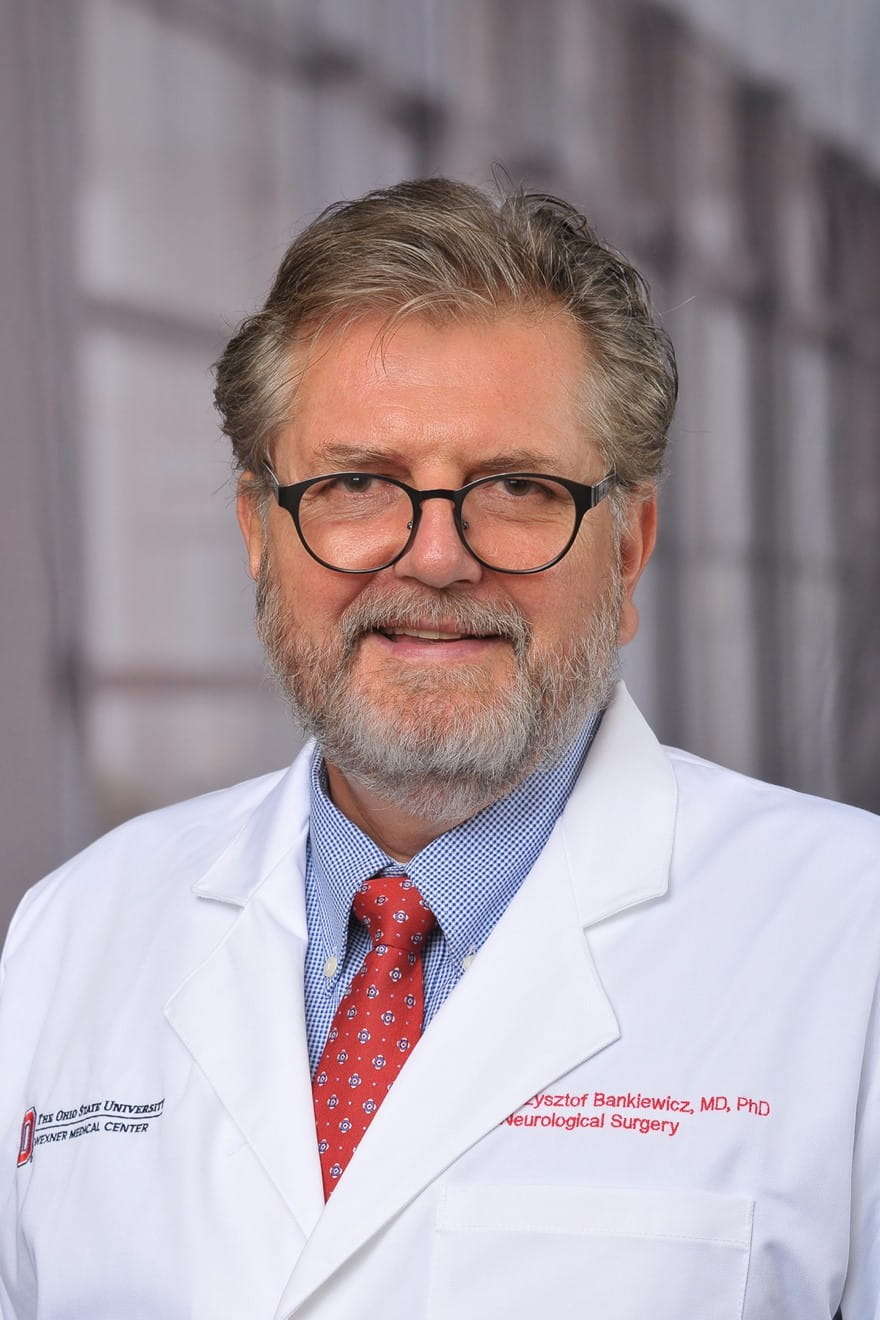September 30, 2021
COLUMBUS, Ohio – A $14.6 million award from The National Institute of Neurological Disorders and Stroke will accelerate research led by The Ohio State University Wexner Medical Center and College of Medicine to further evaluate the safety and effectiveness of gene therapy to treat a rare genetic disorder called AADC deficiency, which causes severe physical and developmental disabilities in children.
This research will build on previous work at Ohio State and the University of California San Francisco using targeted delivery of gene therapy to the midbrain to treat a deadly neurodevelopmental disorder in children with aromatic L-amino acid decarboxylase (AADC) deficiency that is characterized by deficient synthesis of dopamine and serotonin.
 “This major federal award truly defines science with impact,” said Dr. Carol R. Bradford, dean of the Ohio State College of Medicine. “The exploratory clinical trial will pave the way to provide this disease-modifying gene therapy for AADC deficiency and future gene therapies for other neurological disorders.”
“This major federal award truly defines science with impact,” said Dr. Carol R. Bradford, dean of the Ohio State College of Medicine. “The exploratory clinical trial will pave the way to provide this disease-modifying gene therapy for AADC deficiency and future gene therapies for other neurological disorders.”
Only about 135 children worldwide are known to have AADC deficiency. These children are missing the enzyme that produces dopamine in the central nervous system, which fuels pathways in the brain responsible for motor function and emotions.
“Without this enzyme, children lack muscle control, and are usually unable to speak, feed themselves or even hold up their head. They also suffer from seizure-like episodes called oculogyric crises that can last for hours,” said principal investigator Dr. Krystof Bankiewicz, professor of neurological surgery at Ohio State College of Medicine who leads the Bankiewicz Lab. “Delivery of a functional copy of the AADC gene would significantly reduce suffering in afflicted patients and pave the way for registration of other gene therapies for neurological disease.”
Eight children with AADC deficiency have been treated in the initial NIH- funded trial in the United States and an additional 15 children under an ethics committee-approved compassionate use program in Poland, Bankiewicz said.
“In our earlier study, oculogyric crises stopped a few weeks after the surgery and patients’ sleep, mood and irritability improved. Most study participants gained head control and muscular tone, developed purposeful movements and some were able to sit up and start to walk without support, regardless of their age,” said Bankiewicz, who is also a researcher with Ohio State’s Neurological Institute.
This new research will be a multi-center study with patients to be treated at Ohio State University and at the University of California San Francisco.
# # #
Media Contact: Eileen Scahill, Wexner Medical Center Media Relations, Eileen.Scahill@osumc.edu
